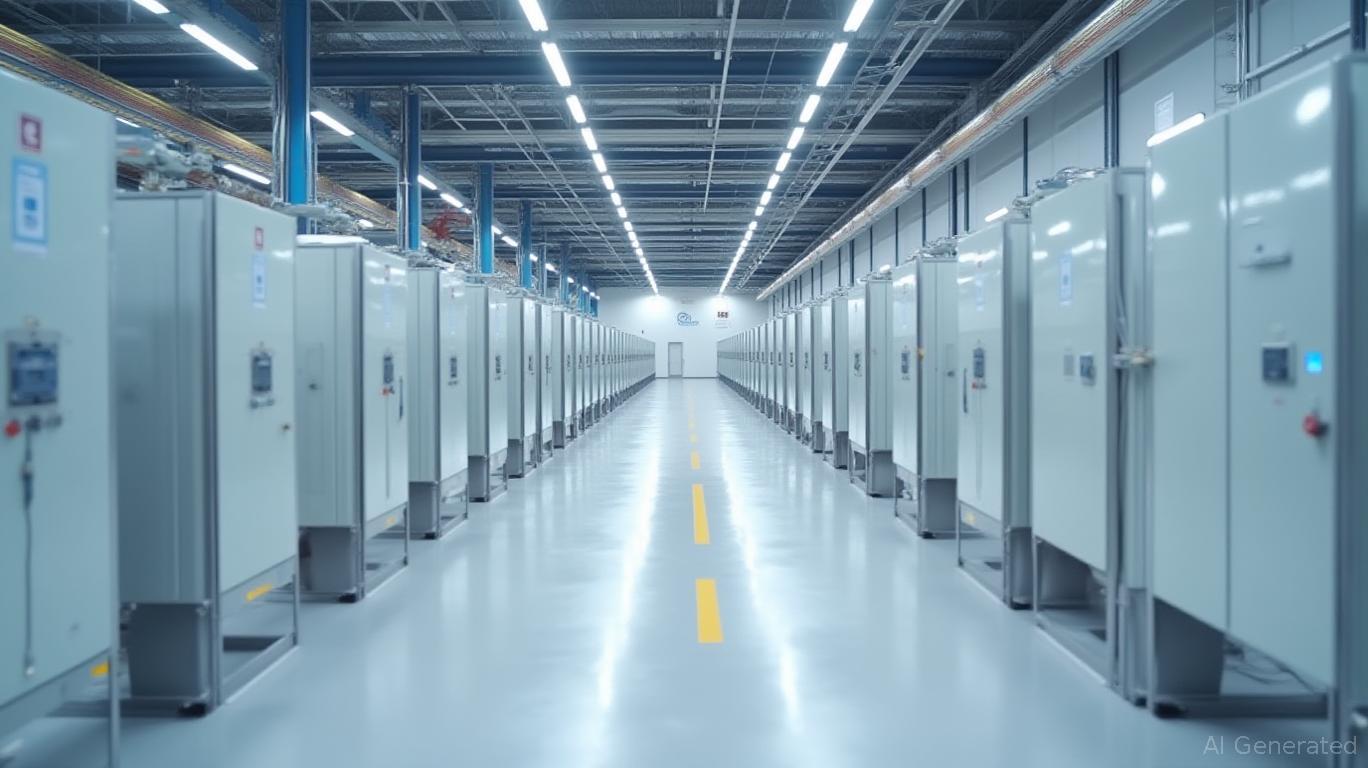Invinity Energy Systems: Pioneering Long-Duration Storage in a Lithium-Dominated Landscape – A Contrarian's Play for the Net-Zero Transition
The global energy storage market is in flux, with lithium-ion batteries dominating headlines and market share. Yet, Invinity Energy Systems (IESVF) is betting big on a different path: vanadium flow batteries (VFBs). Their Q4 2024 earnings report reveals a calculated retreat from short-term revenue growth to plant seeds for a future where long-duration energy storage (LDES) is indispensable. Here's why this strategic pivot could make Invinity a contrarian's darling in the net-zero transition.
Financial Performance: Sacrificing Now for Long-Term Dominance
Invinity's Q4 2024 results showed a stark revenue decline to £5.0 million from £22.0 million in 2023. Yet, this drop was by design. The company intentionally phased out its older VS3 product line to focus entirely on its next-gen ENDURIUM battery, which delivered its first revenues in 2024. While top-line figures retreated, the balance sheet strengthened:
- Cash reserves surged to £32.4 million (up sixfold from 2023), bolstered by a £57.4 million fundraising round backed by the UK National Wealth Fund.
- Adjusted EBITDA improved by 20%, narrowing losses to £18.0 million.
The numbers tell a story of sacrifice: Invinity is reinvesting heavily in manufacturing scale-up and R&D, positioning itself to capitalize on an LDES market McKinsey projects could hit $30 billion by 2030.
The Strategic Shift: ENDURIUM's Edge in a Lithium World
The ENDURIUM battery is no incremental upgrade—it's a reimagining of energy storage for the renewable era. Key advantages:
- Technical Superiority: 75% round-trip efficiency, 3–18-hour discharge cycles, and zero degradation over 25+ years. Unlike lithium, vanadium flow batteries pose no fire risk and tolerate 100% depth of discharge.
- Cost Efficiency: Production costs have already fallen 24% since early 2024, with targets to cut costs by 30%+ by 2026. Maintenance costs are projected to drop 75% over predecessors.
- AI-Driven Optimization: Integrated software reduces operational costs and extends system lifespan.

These features are unlocking megaprojects:
- A 2 GWh partnership with Frontier Power in the UK, enabled by the LDES Cap and Floor Scheme (which excludes lithium).
- The 20.7 MWh LoDES project in Scotland, set to become Europe's largest vanadium flow installation once operational.
- A 315% surge in average deal size YTD 2025 vs. 2024, reflecting demand for LDES in grids strained by renewables' intermittency.
Regulatory Tailwinds and Market Catalysts
Governments are increasingly favoring LDES over lithium, driven by energy security and climate goals:
1. UK's LDES Cap and Floor Scheme: Mandates LDES procurement while excluding lithium, creating a protected market for Invinity.
2. Critical Minerals Policies: The US Inflation Reduction Act and Canada's Critical Minerals Strategy prioritize non-lithium solutions, reducing reliance on imported lithium.
3. Grid Instability Drivers: Blackouts in Spain and the UK's interconnector failures underscore the need for LDES to stabilize grids—something lithium's 4–8-hour limit can't address.
These policies are structural advantages for Invinity, shielding it from lithium's cost wars while enabling partnerships like the 10.8 MWh deal in Hungary and a licensing agreement in Taiwan.
Sustainability and ESG: A Net-Zero Play with Teeth
Invinity's value proposition is deeply tied to sustainability:
- Circular Design: Vanadium can be recycled endlessly, avoiding lithium's toxic waste streams.
- Energy Security: ENDURIUM's 25-year lifespan reduces replacement costs and carbon footprints.
- Just Transition: Projects like LoDES create local jobs and energy independence in regions struggling with grid reliability.
The company's ESG alignment is further solidified by its UK redomiciliation, streamlining operations and reducing carbon emissions. With over 190 MWh deployed globally, Invinity is proving vanadium's role in the net-zero transition isn't theoretical—it's already operational.
Risks and Considerations
- Lithium's Cost Competitiveness: Falling lithium-ion prices (down 20% in 2024) could delay LDES adoption in some markets.
- Execution Risks: Scaling production to meet a 315% surge in deal sizes requires flawless execution.
- Regulatory Uncertainty: The US lacks the UK's LDES mandates, though momentum is building.
Investment Thesis: A Contrarian's Opportunity
Invinity trades at £0.11/share, far below its £32.4 million cash balance plus asset value. Analysts project FY25 revenue of £24.86 million—70% growth—expanding margins from -40% in 2024 to +20% by 2027. With a valuation of £68 million (below its cash+assets), this is a net cash position with a high-growth story.
A buy rating emerges for investors with a 2–3-year horizon:
- Upside Catalysts: LoDES approval, 2 GWh Frontier Power deployment, and US policy shifts.
- Risk-Adjusted Reward: Even if lithium pressures slow growth, Invinity's cash pile offers a margin of safety.
Final Verdict
Invinity is playing the long game. Its Q4 results reflect a deliberate retreat from short-term gains to dominate LDES—a space where lithium's limits are becoming clear. With policy tailwinds, a cost-reduction roadmap, and a product suite that's already proving itself in the field, this is a rare contrarian pick for investors who see beyond lithium's glare. As grids worldwide grapple with renewables' intermittency, Invinity isn't just a battery maker—it's building the backbone of tomorrow's energy system.
Investment Grade: Buy
Price Target: £0.70/share by mid-2026 (350% upside)
Key Watch: June 9 shareholder presentation and LoDES planning approval.

Comments
No comments yet